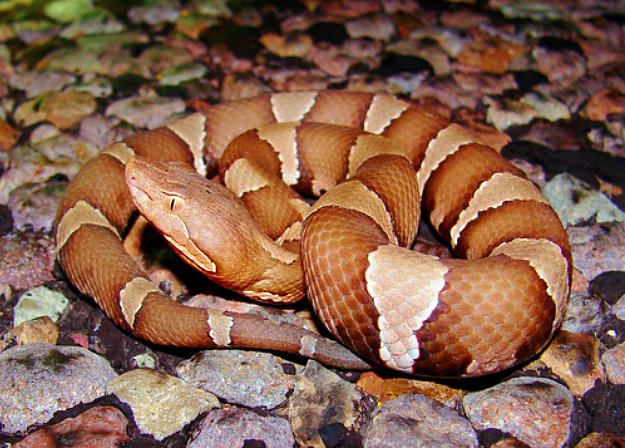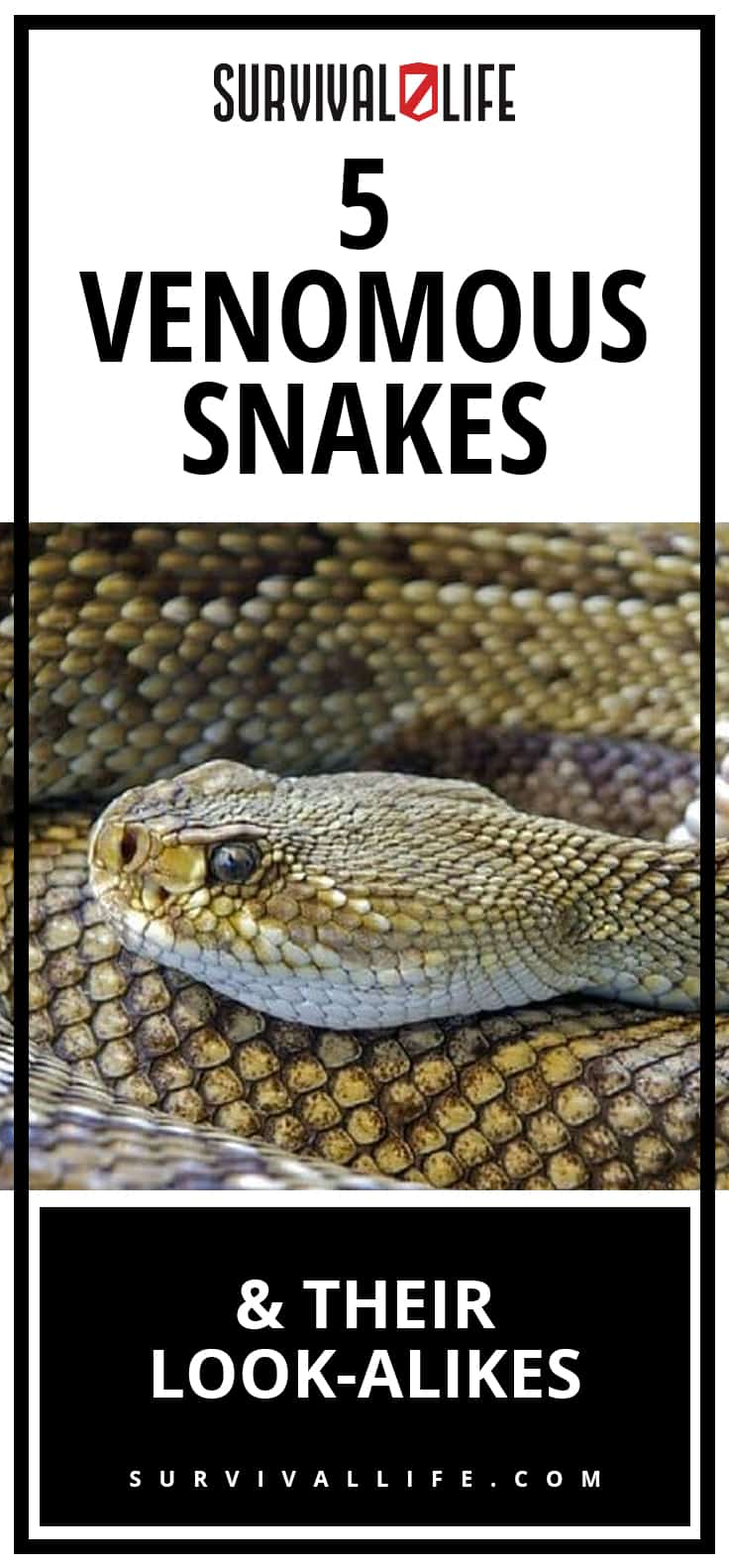5 Venomous Snakes and Their Look-Alikes is courtesy of http://www.totalsurvival.net/
There are over 600 species of venomous snakes on this planet, but only 200 of them can cause real harm to us. With the weather getting warmer and the sun shining brighter, many of us are killing a great deal of time outdoors. And the longer we spend time outdoors, the possibility of encountering different types of venomous snakes is higher. That is why it is of utmost importance to recognize the poisonous snakes from the non-venomous snakes.
I am barefoot more often than not, especially when I’m outside. The other day while I was walking down a path in the woods I came close to stepping on a water snake while it was peacefully sunbathing. I must admit I was startled and so was the poor snake. Good thing they typically take off when encountered by a human. It’s important to know the snakes in your area especially if you love being outdoors. It's good to remember that we're not the only ones enjoying the sunshine! We must coexist with them on this planet. This article is going to cover some of the most common venomous snakes in the US and their non-poisonous look-a-likes.
5 Venomous Snakes & Their Look-Alikes: Know Your Snakes
1. Eastern & Western Diamondback Rattlesnakes
The Eastern Diamondback rattlesnake is located in Eastern and Southeastern states and the Western Diamondback is located in Southwestern desert land. You can find them hanging out in places like dry pine flatlands, sandy woodlands, and in coastal scrub habitats.
The western species live in grassy plains and rocky hillsides. Some of their look-a-likes are the gopher snake, bull, and pine snakes. Both of them are extremely venomous pit vipers and regarded as two of the deadliest North American snakes.
2. Eastern & Western Coral Snakes
There’s an old rhyme that says “black and yellow, kill a fellow and red on black is a friend of Jack.” It’s a good one to learn because that’s how you can determine whether the snake is the venomous coral snake or a harmless look-a-like. The Eastern coral snake is native to Southeastern states while the Western coral snakes are located along the coastal plains.
Coral snakes enjoy wooded, marshy, sandy ground and hide in leaf piles. This deadly reptile has venom packed with dangerous neurotoxins. If left untreated, it could cause cardiac arrest. As a matter of fact, they have the second strongest venom in all of the snake species, next to the Black Mamba. Their look-a-likes are the scarlet king snake, king snakes, and milk snakes.
If you happen to come across a coral snake, make sure you have a watchful eye. They have a trick where they lift their tail up and move it to make you think it's their head and then attacks you from the opposite angle.
3. Copperheads

Rattlesnakes are not the only pit viper that thrives in the Southwest. These rusty colored beasts are native to North, Northwest, Southern, and Southeastern states. Copperheads are Eco-toned snakes which mean they bounce back and forth between two dens or homes. They can be found in rocky woody mountainsides and sunny thickets. They may not be as venomous as a fierce snake or an inland taipan but their bite is extremely painful.
Something you should know is they are the most likely to strike and bite out of all the snakes on this list. Some of the copperhead’s look-a-likes are the Eastern rat snake, black racer snakes, water snakes, milk snakes, corn snakes, and hognose snakes.
4. Cottonmouths
Cottonmouths are also known as, water moccasins. The name cottonmouth was chosen because when they open their mouth real wide it looks like a white ball of cotton in there. These venomous snakes like the heat and are native to Southeastern states such as Arkansas and Texas, although they have been seen elsewhere. These semi-aquatic snakes live close to bodies of water with rocky banks for them to sunbathe on. They rarely bite humans unless these pit vipers are threatened.
You can find them in and around creeks, ponds, lakes, rivers, and rocky marshes. Their bite can be potentially fatal causing anaphylactic reactions. Some of the cottonmouths look-a-likes consist of the Northern water snake, brown water snakes, and red-bellied water snakes.
5. Timber Rattlesnakes
Timber rattlesnakes are one of the few snakes that thrive in the Northeastern United States. They enjoy nesting in deciduous forests, rough and rugged terrain, as well as, on rocky ravines and ledges. These snakes have massive fangs and can distribute a large amount of venom into their victim making them dangerous and feared. There are some water snakes that resemble the timber rattler but this slithering snake has distinct markings.
Orry Martin shows a video of a Coral Snake vs a Milk Snake:
There are venomous and dangerous creatures anywhere you roam. It’s wise to know where they live and avoid any issues, as well as, to enjoy the beauty offered. If you love going outdoors, I highly suggest learning about the specific venomous snakes and their look-a-likes in your region.
If you study them, you’ll notice certain ways to tell the venomous apart from the non-venomous. Things like the shape of their head, their markings, the shape and size of the pupils, and their size and features. Some snakes produce a strange smell to warn predators they are around. Some smell like cucumbers while other smell more like menthol.
I hope you’ve learned a thing or two and I encourage you to reach out and teach me some of your wisdom as well. Happy Trails!

Do you know any more venomous snakes and their look-alikes? Please share them in the comments below!
Up Next: Survival Food | How To Catch, Cook, & Eat Snakes For Survival
Follow us on Facebook, Instagram, Twitter, Pinterest, and Tumblr!
**Disclaimer: All content on this site is for informational purposes only. Please read our full disclaimer here**
Editor’s Note – This post was originally published in July 2017 and has been updated for quality and relevancy.
This Article Was First Found at survivallife.com Read The Original Article HereSee More Here: 5 Venomous Snakes and Their Look-Alikes

No comments:
Post a Comment